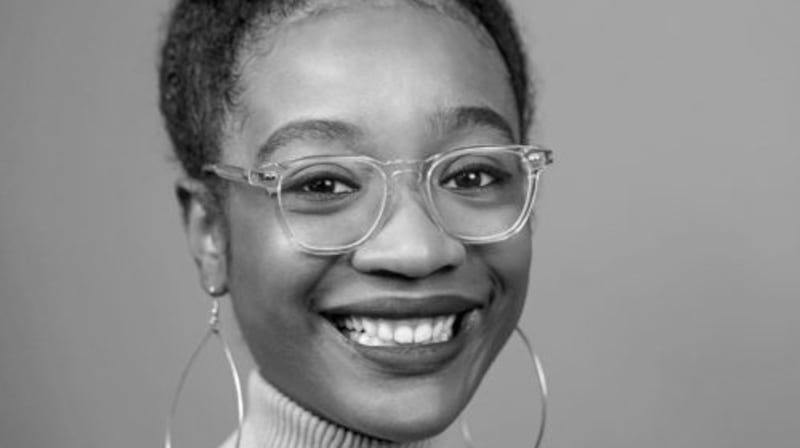Oh Noddy, carefully scrubbed of golliwogs and “gay times in the woods”; oh Faraway Tree, and the renaming of Fanny and Dick! The textual amendments to the work of the prolific and problematic Enid Blyton are many. No preface is provided, distressing for literary purists – or anyone who can’t believe Gwen of Malory Towers no longer gets the slaps she so deserves – who may question whether these edits constitute an “update” or a bowdlerisation. On the other hand, Blyton, a shrewd businesswoman, would likely have approved these changes if it meant remaining popular – as she is, more than 50 years after her death.
The legacy of children’s authors is often complicated, with many beloved titles and writers coming under scrutiny. In the argot of the Extremely Online, your fave is almost certainly problematic. For some, the delicious insanity of Roald Dahl’s fiction is forever tainted by his anti-Semitic comments (his family apologised in late 2020); for others, the books themselves are troubling. (Are Oompa Loompas basically slaves?) Early Tintin comics featured racist stereotypes, some later reworked by creator Hergé. Dav Pilkey of Captain Underpants fame recently apologised for the “harmful racial stereotypes” within a book from 2010, announcing his publisher would remove remaining copies from circulation.

It is tempting to wonder if people – particularly within social media bubbles, which can feel as though everyone has committed to a strange immersive reality TV show where someone must be sacrificed to appease the gods of cancel culture – are taking it all a bit too seriously, reading too much into silly, entertaining kids’ books. How could anyone take offence to, say, Dr Seuss, whose estate announced in March that it was ceasing publication and licensing of six titles it believes “portray people in ways that are hurtful and wrong”?
“My first reaction to it was that it was a bit silly,” admits Matthew Parkinson-Bennett, publisher at Little Island Books. Revisiting one particular Chinese caricature quickly changed his mind. “It’s offensive. You can’t have that in books for kids – you can’t have that in books for adults!” The outraged cries from those who felt this was an attack on freedom of speech missed the point, he feels; these are people “who don’t think about children’s books the rest of the year”. Those who think about them daily are always aware of their responsibility to a young audience – but hard-and-fast rules to ensure inoffensive content are impossible.
“If you say you just never have anything racist in a book – that sounds like a good positive rule. But then how do you represent racism in a negative light? Everything with fiction is so dependent on context and the ways things are written, which character is saying a particular line and how that character is represented.”
Danger of sanitisation
Contextualising the dodgy bits within Seuss’s overall body of work is worth doing. This is a writer who reminded us that “a person’s a person no matter how small” (Horton Hears a Who?). Parkinson-Bennett cites stories such as The Sneetches, an allegory about racial discrimination, as closer to Seuss’s overall sense of himself as “very progressive and subversive – which in the context of the times, he was. But he was also a product of his times.” Withdrawing certain titles may be a way of respecting, rather than undermining, a legacy.

There is, of course, a danger in this hyper-aware, hyper-critical culture: of literary culture becoming so anodyne and sanitised it dies out entirely – the kind of scenario Ray Bradbury posits in Fahrenheit 451. “Authors, full of evil thoughts, lock up your typewriters. They did.”
YA author Brian Conaghan, whose gritty social realism has won prizes and been challenged in equal measure (who knew Glaswegian teenagers sometimes swear? Disgraceful!), is all too aware that considering all the potential interpretations of your work before you begin would be paralysing. “I wouldn’t have been able to progress another sentence. The whole point of creativity is about challenging the society, challenging the establishment, challenging the social norms.”
It’s worth distinguishing here between the first draft and the published version; Conaghan very much strives to be sensitive towards his characters, who often teeter on the margins of society. But he is critical of how often work for children and teenagers, including his own, is labelled as being about “issues” – rather than (as is the case with fiction for adults) recognising that all stories are about characters facing obstacles.
Aimée Felone, managing director of children’s publisher Knights Of, set up specifically to address inclusivity in the field, approaches this point from a different angle; she notes how often books featuring under-represented voices zoom in on a designated “issue”. “The trend towards trauma and racism is tiring. If reading is meant to be a form of escape, open up doors, windows etc for readers then I question why it’s the ‘diverse’ books that so often focus on traumatic stories or reckoning of racial histories.”

Censorship is not being called for here; the focus is on curation. Knights Of are invested in “finding voices that can make up the new canon of literature so that we can rely less on the problematic titles that are in circulation”, a sentiment echoed by Gráinne Clear, commissioning editor at Walker Books. “I don’t feel like taking books off the shelves is the answer – it’s like erasing history, denying we ever felt that way.” (She points to the disclaimers that now preface many of the Looney Tunes cartoons.)
On a more pragmatic level, she adds, you can’t really get rid of books once they’re out there. What you can do is “drown them with new books that are better”.
‘Unfair’ stories
New books can also offer a slant on old stories. Ella Risbridger’s debut children’s novel, The Secret Detectives, serves as a “writing back” to The Secret Garden, a classic she both loves and finds “unfair” (a term she finds more useful, and immediate, than the theoretical, overused “problematic”). By age 10 or 11, she “thought it was weird that nobody was that sad about the death of the servants in the first chapter. I remember thinking it was extremely weird that they were the only people who had ever cared for the heroine up until the age of 11, and she didn’t even know their names.”
The Secret Detectives gives them names and much more besides. But while the book is informed by a social conscience and a degree in comparative literature (a course of study which “does really hammer home quite how much the English have based an entire worldview on squashing other people”), it is more simply “the story I wanted to tell”.

The story someone wants to tell may not be the story an audience wants to hear. What is “problematic” is, as bookseller MaryBrigid Turner notes, often in the eye of the beholder. She cites Angie Thomas’s The Hate U Give as a prime example; a title praised for its representation of racism and police brutality in America is also frequently challenged. In this case, what is problematic is, as Turner puts it, “why are we talking about the subject at all?”
This line of thought is echoed in the most recent “most challenged books” list from the American Library Association, unveiled in early April, where contemporary books with a specific anti-racist agenda dominate the top 10 (though “LGBTQIA+ content” still features heavily).
Focusing on diversity of various sorts, and the need for more of it, allows one to side-step the knotty business of trying to distinguish between pearl-clutching and thoughtful concern, even if these discussions are often more hope than action. To reduce the obstacles that under-represented voices face in all kinds of writing is not simply a matter of editorial enthusiasm; systemic discrimination resists a quick fix. And “who gets to tell the story” may be the wrong focus.
Poet and editor Nidhi Zak/Aria Eipe suggests “approaching cultural production as a collective endeavour”. She’s spearheading the Play It Forward programme, an initiative aimed at writers of poetry and prose in Ireland, where the object is to build “a community in which the whole spectrum of stories can be illuminated, so that a few dominant modes of storytelling do not serve as the default. Otherwise what we risk losing is a richness, a plurivocity, that full-bodied orchestra who carry the music of other languages, other songs, in their mouths.”












